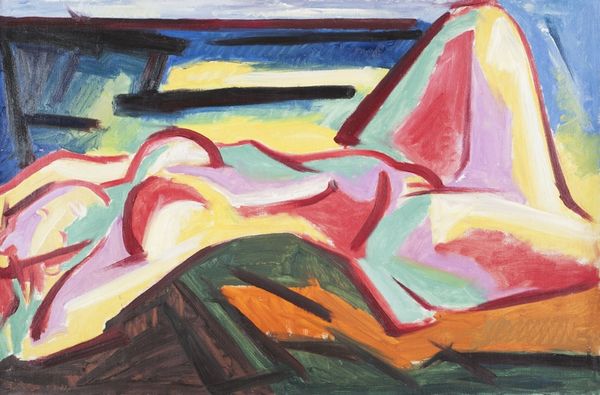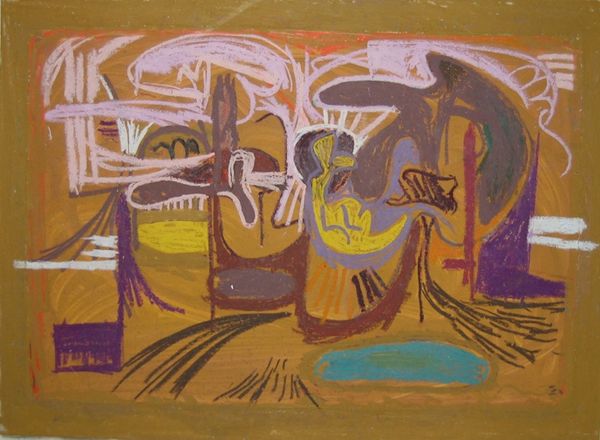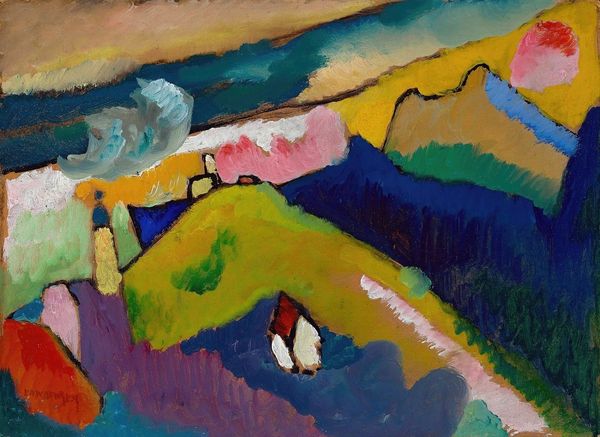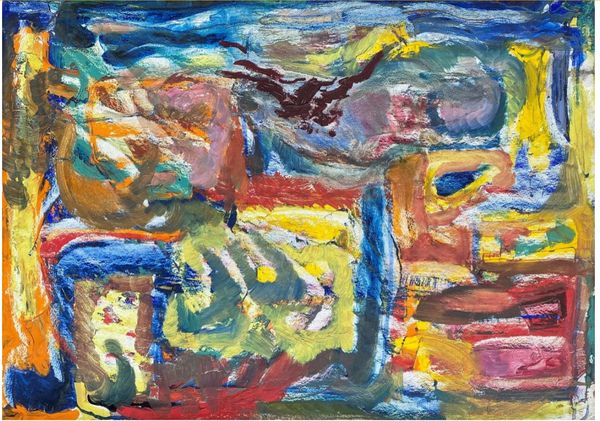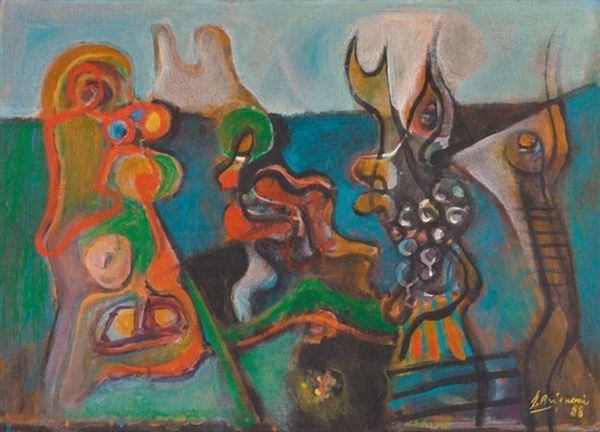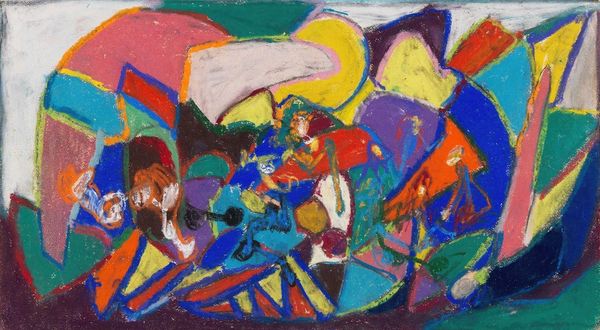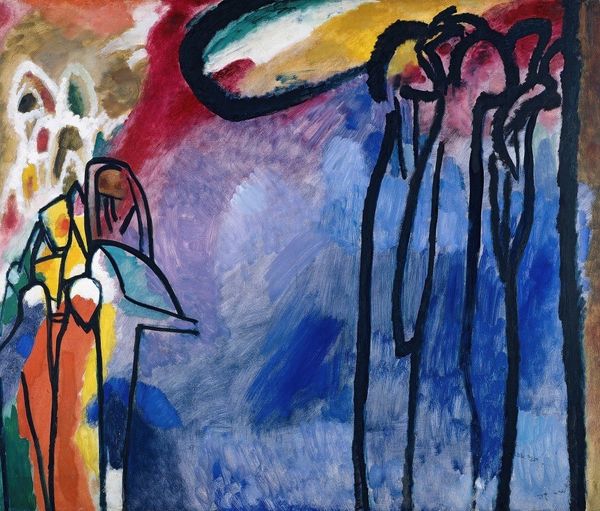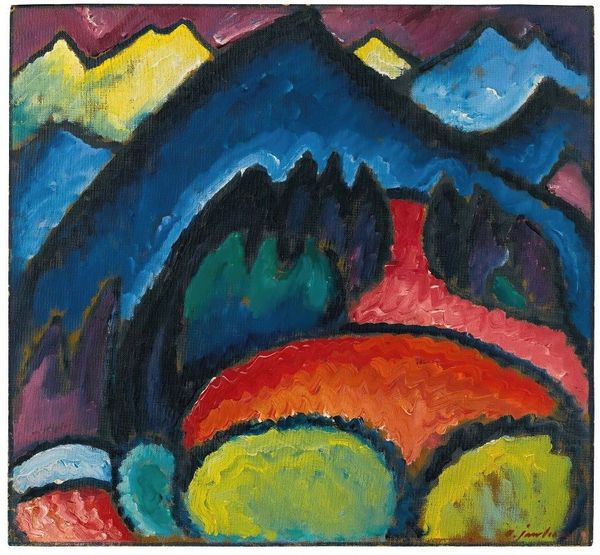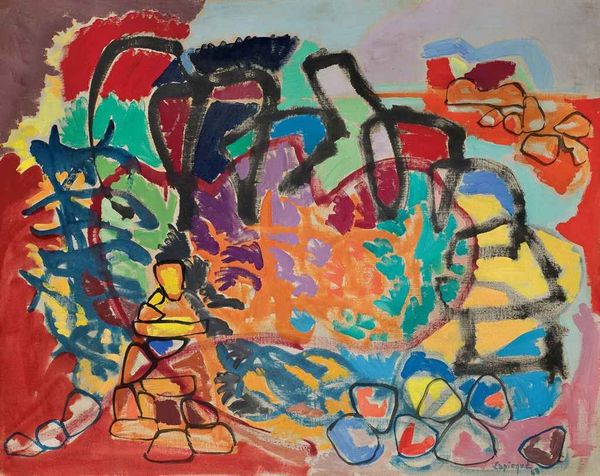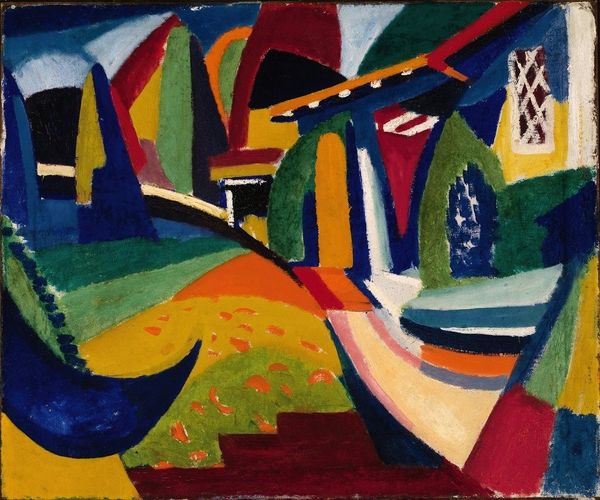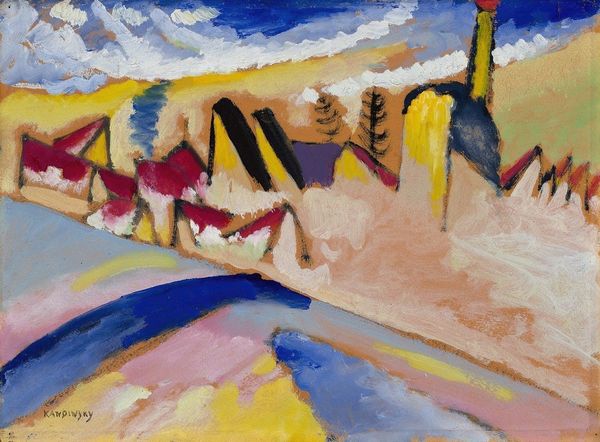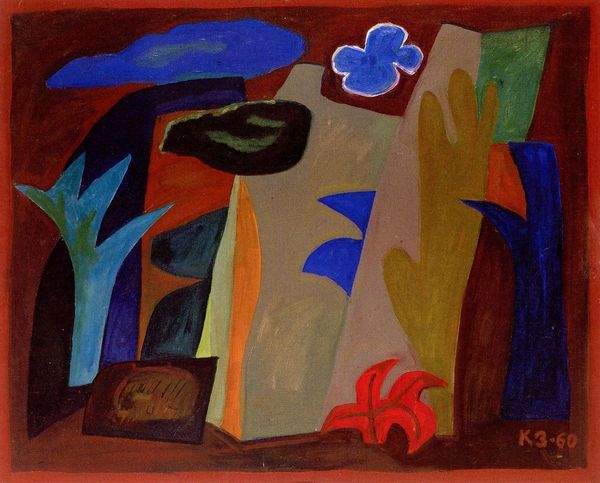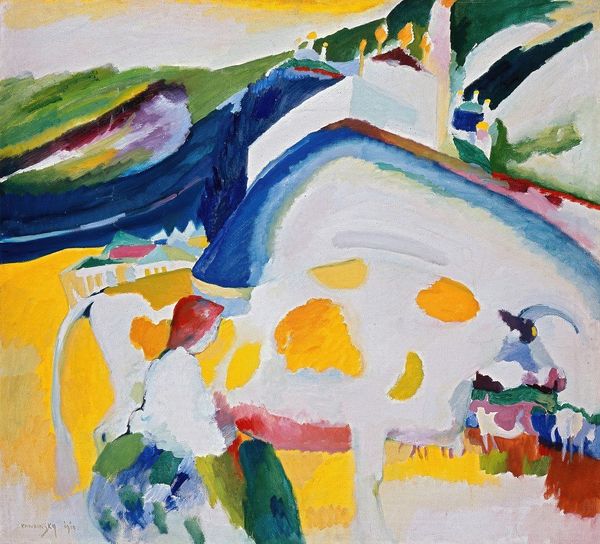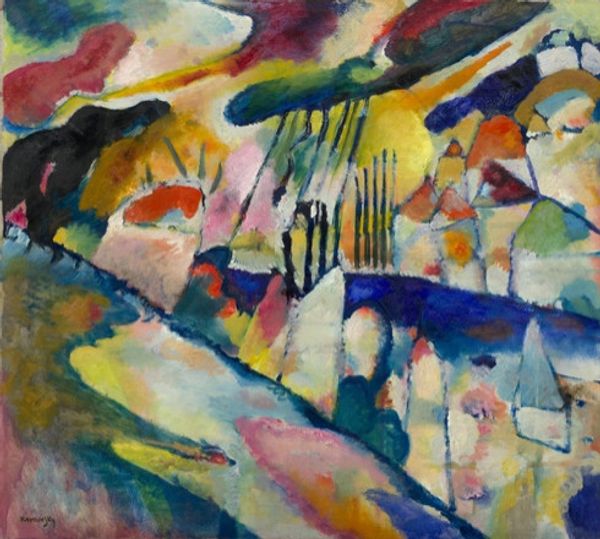
painting, oil-paint
#
art-nouveau
#
narrative-art
#
painting
#
oil-paint
#
landscape
#
figuration
#
geometric
#
expressionism
#
modernism
Copyright: Public Domain: Artvee
Editor: This is "Painting with Troika" by Wassily Kandinsky, created in 1911 using oil paint. It has such a dreamlike, almost hallucinatory quality. What do you see in this piece? Curator: I see a potent example of Kandinsky's move toward abstraction, a deliberate rejection of the representational norms of his time. But this isn't just about aesthetics; it's a political act. In the early 20th century, artistic experimentation became a form of resistance. What do you make of the central image of the troika, the horse-drawn sleigh? Editor: I suppose I see it as just an interesting shape in motion, maybe referencing Russian folk traditions. Curator: Exactly! But think about that tradition. The troika isn't simply a mode of transport; it's symbolic of Russia itself – its vastness, its potential, and its inherent struggles. Kandinsky is situating himself within that cultural and political landscape. His work can be interpreted through the lens of contemporary philosophy too. Consider Bergson’s theories on duration – how might Kandinsky be visually representing lived experience and time through these forms? Editor: I see what you mean, he is less representing objective reality and more depicting feelings. It makes me think of memory, how things are not precise when remembered. The rainbow adds something of a utopian ideal. Curator: Absolutely. And look how color serves as more than just description; it's emotive, it's disruptive. Does the subversion of the artistic norm itself, and through it the prevailing culture, have contemporary parallels? Where do we see similar gestures today, be it in painting or music? Editor: This reminds me to think about the artistic act itself as a kind of cultural critique. Thank you, it really does feel more potent and significant now! Curator: Indeed. Art invites us to consider ourselves within larger systems. The role of the artist is less the 'producer of objects', and more the 'cultural provocateur'!
Comments
No comments
Be the first to comment and join the conversation on the ultimate creative platform.
